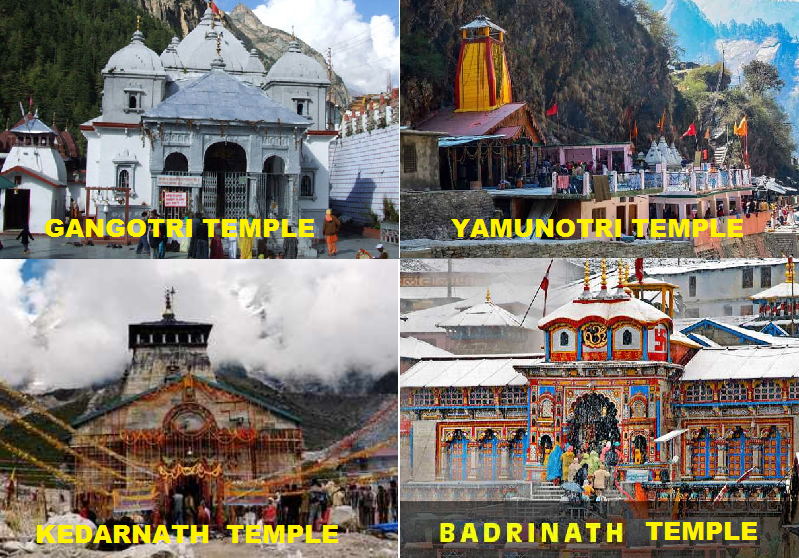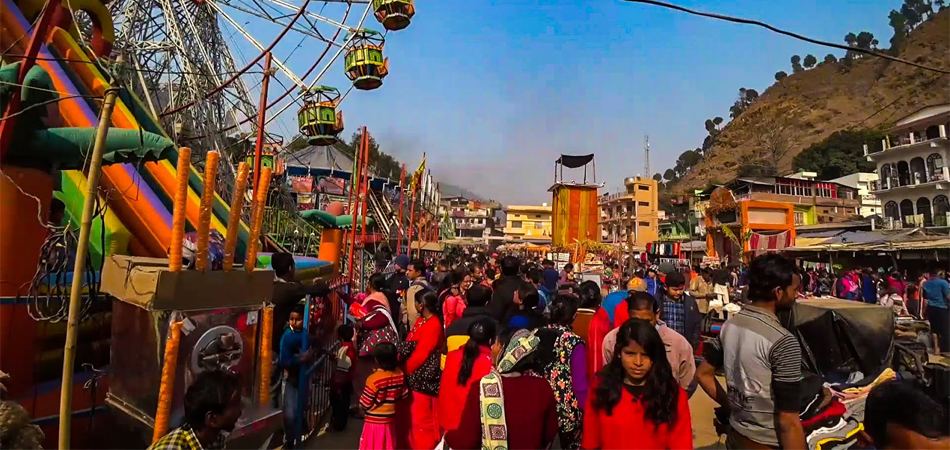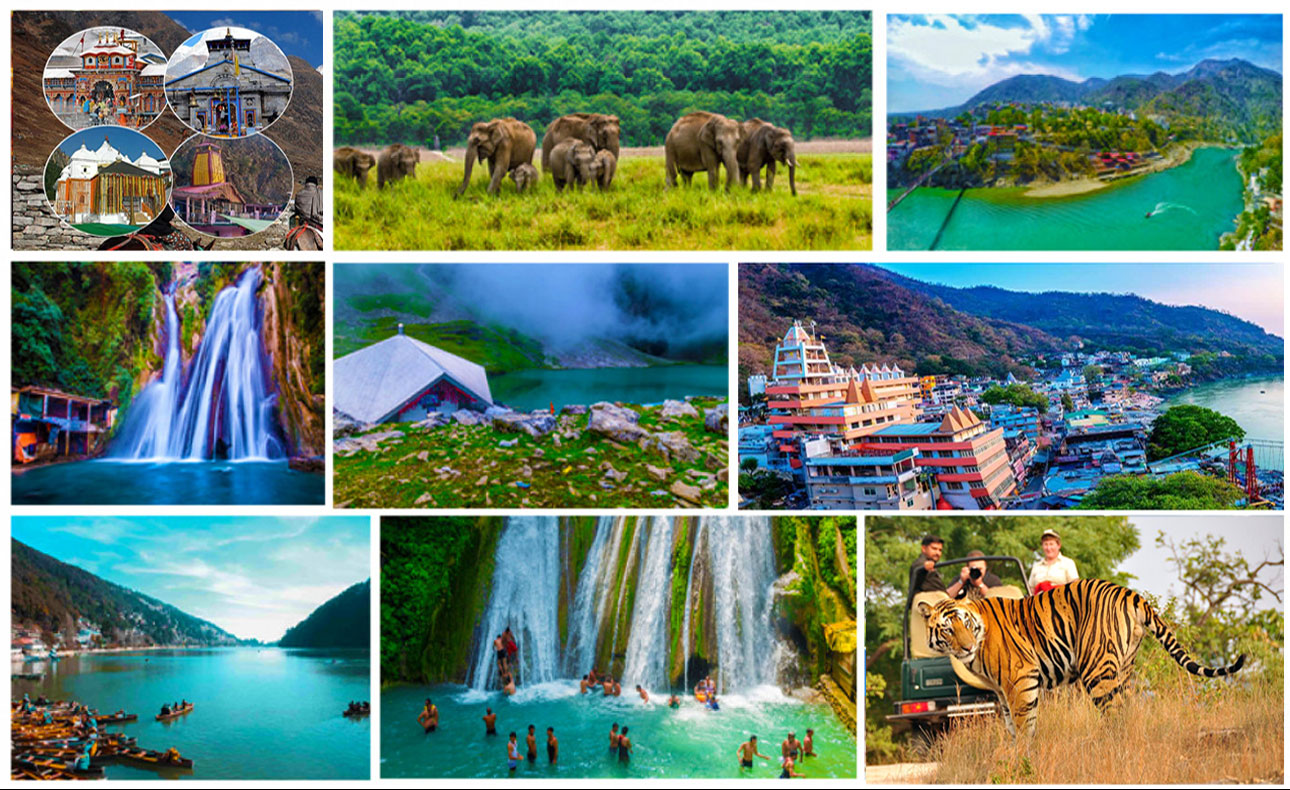1. Kedarnath Temple
- Location: Kedarnath, Rudraprayag
- Significance: One of the four sacred shrines of the Char Dham Yatra, Kedarnath Temple is dedicated to Lord Shiva. Perched at an altitude of 3,583 meters (11,755 feet) in the snow-capped mountains of the Himalayas, this temple is one of the most important pilgrimage destinations in India.
- Highlights: The temple is surrounded by stunning views of the Himalayas, and its ancient architecture and intricate carvings add to the divine aura. The temple is open to devotees only from May to November, due to extreme weather conditions in winter.
2. Badrinath Temple
- Location: Badrinath, Chamoli
- Significance: Badrinath is another major shrine in the Char Dham Yatra. It is dedicated to Lord Vishnu, who is worshiped here in his Badri form. According to Hindu mythology, Lord Vishnu meditated here for centuries to protect humanity.
- Highlights: The temple is located at an altitude of 3,133 meters (10,279 feet) along the banks of the Alaknanda River. The region’s beautiful landscapes and the temple’s rich history make it one of the most visited pilgrimage sites in India.
3. Har Ki Pauri
- Location: Haridwar
- Significance: Har Ki Pauri is not just a temple but one of the holiest ghats in India, located in Haridwar on the banks of the Ganges River. It is believed to be the spot where Lord Vishnu left his footprint, which makes it an extremely sacred location for Hindus.
- Highlights: Every evening, the Ganga Aarti performed at this ghat is a spectacular sight, attracting thousands of devotees. Pilgrims come to take a holy dip in the Ganges to purify themselves and seek blessings.
4. Yamunotri Temple
- Location: Yamunotri, Uttarkashi
- Significance: Located at the source of the Yamuna River, Yamunotri is one of the Char Dham pilgrimage sites. The temple is dedicated to Goddess Yamuna, the sister of Yama, the God of death. It is believed that offering prayers here frees devotees from the fear of death.
- Highlights: The temple is located at an altitude of 3,291 meters (10,797 feet), and the area is famous for its hot springs and the beautiful natural surroundings. It is a vital stop for those on the Char Dham Yatra.
5. Gangotri Temple
- Location: Gangotri, Uttarkashi
- Significance: Gangotri is the origin of the Ganges River and is one of the four sacred sites of the Char Dham Yatra. The temple is dedicated to Goddess Ganga, who descended to earth in the form of the river.
- Highlights: The temple, located at an altitude of 3,042 meters (9,946 feet), is situated amidst breathtaking Himalayan scenery. Pilgrims from around the world visit to witness the beauty of the Ganges and seek the blessings of Goddess Ganga.
6. Mahasu Devta Temple
- Location: Hanol, Dehradun
- Significance: Dedicated to Mahasu Devta, this temple is known for its rich cultural heritage and is a major shrine in the Jaunsar-Bawar region. Mahasu Devta is considered the presiding deity of the region.
- Highlights: The temple’s peaceful and secluded location in the midst of forests and hills makes it a serene and spiritual place. The annual fair held here attracts numerous devotees.
7. Naina Devi Temple
- Location: Nainital
- Significance: Located on the northern shore of Naini Lake, the Naina Devi Temple is one of the 51 Shakti Peethas in India. The temple is dedicated to Goddess Naina Devi, an incarnation of Goddess Durga.
- Highlights: The temple offers a picturesque view of Nainital and its surroundings, making it a popular tourist and pilgrimage destination. The view of the lake from the temple is mesmerizing.
8. Kaili Devi Temple
- Location: Kailon, Almora
- Significance: Dedicated to Kaili Devi, an incarnation of Goddess Durga, the Kaili Devi Temple is an ancient temple located in the foothills of the Himalayas. It is a prominent religious and cultural hub for the local communities.
- Highlights: The temple is particularly visited by pilgrims seeking protection from evil forces. The temple is surrounded by beautiful natural scenery, making it a peaceful retreat for visitors.
9. Patal Bhuvaneshwar Temple
- Location: Patal Bhuvaneshwar, Pithoragarh
- Significance: This ancient temple is dedicated to Lord Shiva and is located inside a cave. According to Hindu mythology, the temple is built over the path that leads to the underworld, which is why it’s known as Patal Bhuvaneshwar (the underworld of the world).
- Highlights: The temple’s mystical ambiance, combined with its historical significance, makes it a unique destination. It is also famous for its intricate carvings, and the cave temple is considered a major pilgrimage site.
10. Jageshwar Temple
- Location: Jageshwar, Almora
- Significance: Dedicated to Lord Shiva, the Jageshwar Temple is part of a complex of over 100 temples dating back to the 8th century. It is a peaceful temple surrounded by lush forests and is considered one of the most sacred places for Shiva worship in Uttarakhand.
- Highlights: The temple’s unique architecture, along with its location in the beautiful Kumaon hills, makes it a serene and spiritual place for devotees and visitors alike.
Conclusion
Uttarakhand’s temples are not only revered for their religious significance but also for their breathtaking locations and cultural importance. Whether you’re visiting the ancient Kedarnath Temple in the high Himalayas, the serene Yamunotri Temple at the river’s origin, or the divine Har Ki Pauri in Haridwar, each temple offers a unique blend of spirituality, nature, and history. Uttarakhand truly lives up to its name as the Land of Gods, providing a perfect spiritual journey for devotees and travelers alike.




